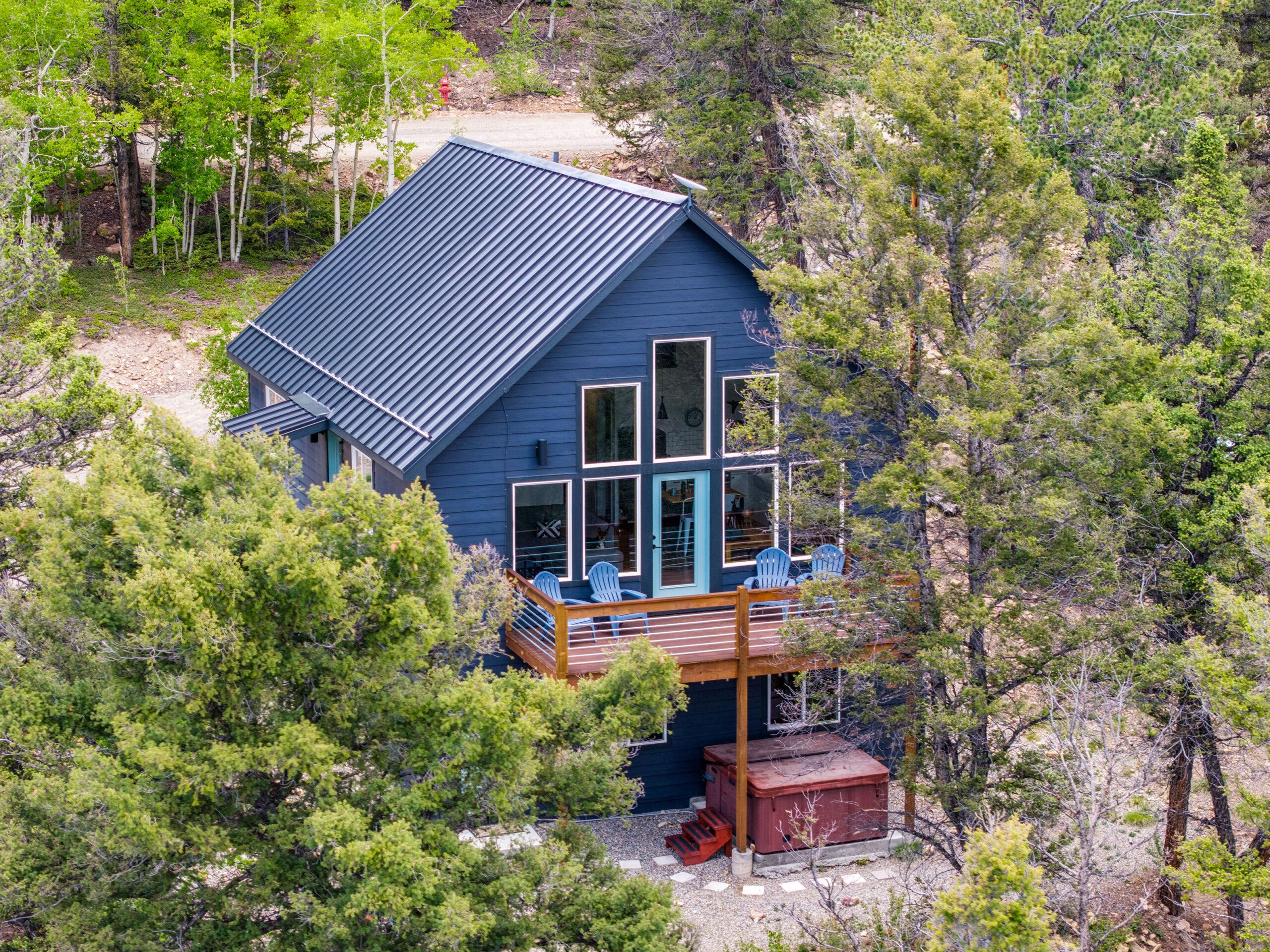FasTracks, Worth $7.9 Billion?
by Osman Parvez
—-
Over the entire Denver/Boulder metro area, there’s been a lot of buzz about a certain public transit project. Last month, the Regional Transportation District of Denver (RTD) completed its annual FasTracks evaluation and announced a new budget of $7.9 billion, a 68% increase from the original budget. The project has received quite a bit of press over the past few weeks. Starting at the FasTracks website, through editorials in the local papers, and speaking with dozens of people to gain their insights, here’s my attempt to dissect the situation.
First, I believe a brief review is in order. In 2004, FasTracks was approved by voters to add six public transit rail lines between 2013 and 2016, with a combined length of 122 miles, at a cost of $4.7 billion. Although the project was ambitious, it passed much in part due to the success of Transportation Expansion Project (T-REX), which finished under its budget and almost two years ahead of schedule. T-REX, with a $1.67 billion budget, included the widening of I-25 and I-225 and the southeast light rail corridor, which opened in November 2006 and marked the end of the project.
A map of FasTracks can be found below. A larger version can be found at RTD’s website. It’s hard to believe that until July 2000, all that existed was the Central Corridor (from I-25 and Broadway to 30th and Downing).

Onto the troubles that the program has been facing, in May 2007, RTD originally reported a $1.5 billion budget overrun. They attributed the increase to the unprecedented increase in material and construction costs. Jumping to the 2008 evaluation, material costs have continued to rise, and the slumping economy has resulted in poor sales tax revenues.
RTD has published the results of its 2008 evaluation online. I would highly recommend that everyone at least take a look at the three and a half page summary here. The evaluation details the new material cost and tax revenue forecasts, and how they arrived at the new $7.9 billion figure. The report also explains the three options that the FasTracks project is facing. You are probably already aware of these, but here they are in brevity: (1) reduce the project and complete by 2017, with current funding, (2) delay completion by 10-15 years, within voter-approved revenue limits, and (3) implement original FasTracks by 2017 and increase the budget. RTD assumes that it can secure $1 billion of federal funding in the first two options.
Before discussing these options, is important to first recognize the scope of FasTracks. According to the 2007 Census, the populations of the Denver-Aurora Metropolitan area and Boulder Metropolitan area were 2.46 and 0.29 million, respectively. This region easily encompasses FasTracks and includes some areas that will not be serviced by the program (Elbert, Park, Clear Creek, and Gilpin Counties) and many cities that are 10-20 miles from the proposed lines (Parker, Brighton, Castle Rock, and Ken Caryl, for instance). Urban, or suburban, sprawl is a distinctive characteristic of Western United States. Personally, I feel lucky to be able to live in a house with a front and back yard. In Denver, it is easy to live in a house, on a decent lot, within urban areas or live in a house in a calmer suburban area, yet still be close to a big city. Unfortunately, this creates huge transportation issues.
At first glance, the idea that such a massive public transportation project should occur in Denver, Colorado is insane. As I mentioned earlier, the new lines will have a length of 122 miles, that’s in addition to the 39.4 miles of existing light rail and not including the Bus Rapid Transit (BRT) up US-36. For comparison, the Chicago ‘L’ and Los Angeles Metro Rail serve 106 and 73 miles of track, respectively. St. Louis and Dallas have similar light rail systems that are each 45 miles in length. However, maybe this is just the kind of solution we need. Any commuter in Denver can attest to the excessive traffic in the northern part of the city. I do not know anyone in Boulder who does not complain about the traffic along US-36. Before T-REX, the southeastern part of Denver was a mess as well. Rather than widening lanes and encouraging personal transportation, it may be wiser to prepare for the future, when personal transportation will be even more expensive, and resources will not be available for its daily use by the majority of a large city’s population.
Now, taking a look at the three options, I think it would be smart to not even consider the second option of delaying FasTracks into 2030 and beyond. It is just too hard to project that far into the future and consider the future state of Denver, local transportation, the country, and mass transit itself. Plus, many of the residents paying for the project will end up moving, retiring, or benefiting very little from FasTracks at that point.
The debate between the remaining options hinges very much on the question of how much the FasTracks program would be reduced. From the RTD summary,
RTD would complete the current environmental processes; basic engineering; procurement of railroad right-of-way for all corridors; construct the East Corridor and Gold Line; Denver Union Station; US 36 BRT Phase 1; West Corridor; and the Bus, Commuter Rail, and Light Rail Maintenance Facilities all by 2017.
Below, I have drawn on the previous map to indicate, in red, the lines that would not be built. Note the differences between US 36 BRT Phase 1 and 2. Phase 1 includes slip ramps for each exit and some park-n-Ride improvements. Phase 2, scheduled for completion in 2016 and final design in 2010, would include HOV lanes for busses and high frequency service. Colorado Department of Transportation (CDOT) already has plans to add general purpose lanes along US-36.

As you can see from the map, quite a bit of the service would be curtailed. However, each side has a solid argument. First of all, it will be hard to go back to voters and ask for yet another tax increase – a likely necessity for the increased budget. Optimizing RTD’s operating revenues would probably involve increased parking fees and fares. In the past, there has been great debate on parking fees at Park ‘n Rides. Higher fees discourage use of the system, when the overall goal is to encourage use of public transportation as much as possible.
On the other hand, as I mentioned before, it would be remarkable for Denver to continue to support such a huge public transportation project. The rewards of the full project would be substantial. FasTracks would encourage growth all along the northern Denver metro area and help sustain the rest of the city. It would be invaluable to suburbs of the Boulder metro area, linking these cities to both Denver and Boulder. Cutting back the project would devastating to certain local markets such as Longmont and Thorton. In addition, public projects in down markets create jobs and help keep the local economy steady.
Assuming RTD can stay within the new budget and accomplish its revised goals, FasTracks may be worth it.
—-
Want to get blog updates via email? Click HERE.
Ready to buy or sell? Schedule an appointment or call 303.746.6896.
You can also like our Facebook page or follow us on Twitter.
As always, your referrals are deeply appreciated.
—
The ideas and strategies described in this blog are the opinion of the writer and subject to business, economic, and competitive uncertainties. We strongly recommend conducting rigorous due diligence and obtaining professional advice before buying or selling real estate.
FasTracks, Worth $7.9 Billion?
by Osman Parvez
—-
Over the entire Denver/Boulder metro area, there’s been a lot of buzz about a certain public transit project. Last month, the Regional Transportation District of Denver (RTD) completed its annual FasTracks evaluation and announced a new budget of $7.9 billion, a 68% increase from the original budget. The project has received quite a bit of press over the past few weeks. Starting at the FasTracks website, through editorials in the local papers, and speaking with dozens of people to gain their insights, here’s my attempt to dissect the situation.
First, I believe a brief review is in order. In 2004, FasTracks was approved by voters to add six public transit rail lines between 2013 and 2016, with a combined length of 122 miles, at a cost of $4.7 billion. Although the project was ambitious, it passed much in part due to the success of Transportation Expansion Project (T-REX), which finished under its budget and almost two years ahead of schedule. T-REX, with a $1.67 billion budget, included the widening of I-25 and I-225 and the southeast light rail corridor, which opened in November 2006 and marked the end of the project.
A map of FasTracks can be found below. A larger version can be found at RTD’s website. It’s hard to believe that until July 2000, all that existed was the Central Corridor (from I-25 and Broadway to 30th and Downing).

Onto the troubles that the program has been facing, in May 2007, RTD originally reported a $1.5 billion budget overrun. They attributed the increase to the unprecedented increase in material and construction costs. Jumping to the 2008 evaluation, material costs have continued to rise, and the slumping economy has resulted in poor sales tax revenues.
RTD has published the results of its 2008 evaluation online. I would highly recommend that everyone at least take a look at the three and a half page summary here. The evaluation details the new material cost and tax revenue forecasts, and how they arrived at the new $7.9 billion figure. The report also explains the three options that the FasTracks project is facing. You are probably already aware of these, but here they are in brevity: (1) reduce the project and complete by 2017, with current funding, (2) delay completion by 10-15 years, within voter-approved revenue limits, and (3) implement original FasTracks by 2017 and increase the budget. RTD assumes that it can secure $1 billion of federal funding in the first two options.
Before discussing these options, is important to first recognize the scope of FasTracks. According to the 2007 Census, the populations of the Denver-Aurora Metropolitan area and Boulder Metropolitan area were 2.46 and 0.29 million, respectively. This region easily encompasses FasTracks and includes some areas that will not be serviced by the program (Elbert, Park, Clear Creek, and Gilpin Counties) and many cities that are 10-20 miles from the proposed lines (Parker, Brighton, Castle Rock, and Ken Caryl, for instance). Urban, or suburban, sprawl is a distinctive characteristic of Western United States. Personally, I feel lucky to be able to live in a house with a front and back yard. In Denver, it is easy to live in a house, on a decent lot, within urban areas or live in a house in a calmer suburban area, yet still be close to a big city. Unfortunately, this creates huge transportation issues.
At first glance, the idea that such a massive public transportation project should occur in Denver, Colorado is insane. As I mentioned earlier, the new lines will have a length of 122 miles, that’s in addition to the 39.4 miles of existing light rail and not including the Bus Rapid Transit (BRT) up US-36. For comparison, the Chicago ‘L’ and Los Angeles Metro Rail serve 106 and 73 miles of track, respectively. St. Louis and Dallas have similar light rail systems that are each 45 miles in length. However, maybe this is just the kind of solution we need. Any commuter in Denver can attest to the excessive traffic in the northern part of the city. I do not know anyone in Boulder who does not complain about the traffic along US-36. Before T-REX, the southeastern part of Denver was a mess as well. Rather than widening lanes and encouraging personal transportation, it may be wiser to prepare for the future, when personal transportation will be even more expensive, and resources will not be available for its daily use by the majority of a large city’s population.
Now, taking a look at the three options, I think it would be smart to not even consider the second option of delaying FasTracks into 2030 and beyond. It is just too hard to project that far into the future and consider the future state of Denver, local transportation, the country, and mass transit itself. Plus, many of the residents paying for the project will end up moving, retiring, or benefiting very little from FasTracks at that point.
The debate between the remaining options hinges very much on the question of how much the FasTracks program would be reduced. From the RTD summary,
RTD would complete the current environmental processes; basic engineering; procurement of railroad right-of-way for all corridors; construct the East Corridor and Gold Line; Denver Union Station; US 36 BRT Phase 1; West Corridor; and the Bus, Commuter Rail, and Light Rail Maintenance Facilities all by 2017.
Below, I have drawn on the previous map to indicate, in red, the lines that would not be built. Note the differences between US 36 BRT Phase 1 and 2. Phase 1 includes slip ramps for each exit and some park-n-Ride improvements. Phase 2, scheduled for completion in 2016 and final design in 2010, would include HOV lanes for busses and high frequency service. Colorado Department of Transportation (CDOT) already has plans to add general purpose lanes along US-36.

As you can see from the map, quite a bit of the service would be curtailed. However, each side has a solid argument. First of all, it will be hard to go back to voters and ask for yet another tax increase – a likely necessity for the increased budget. Optimizing RTD’s operating revenues would probably involve increased parking fees and fares. In the past, there has been great debate on parking fees at Park ‘n Rides. Higher fees discourage use of the system, when the overall goal is to encourage use of public transportation as much as possible.
On the other hand, as I mentioned before, it would be remarkable for Denver to continue to support such a huge public transportation project. The rewards of the full project would be substantial. FasTracks would encourage growth all along the northern Denver metro area and help sustain the rest of the city. It would be invaluable to suburbs of the Boulder metro area, linking these cities to both Denver and Boulder. Cutting back the project would devastating to certain local markets such as Longmont and Thorton. In addition, public projects in down markets create jobs and help keep the local economy steady.
Assuming RTD can stay within the new budget and accomplish its revised goals, FasTracks may be worth it.
—-
Want to get blog updates via email? Click HERE.
Ready to buy or sell? Schedule an appointment or call 303.746.6896.
You can also like our Facebook page or follow us on Twitter.
As always, your referrals are deeply appreciated.
—
The ideas and strategies described in this blog are the opinion of the writer and subject to business, economic, and competitive uncertainties. We strongly recommend conducting rigorous due diligence and obtaining professional advice before buying or selling real estate.
Share This Listing!
More about the author
Osman Parvez
Owner & Broker at House Einstein as well as primary author of the House Einstein blog with over 1,200 published articles about Boulder real estate. His work has appeared in the Wall Street Journal and Daily Camera.
Osman is the primary author of the House Einstein blog with over 1,200 published articles about Boulder real estate. His work has also appeared in many other blogs about Boulder as well as mainstream newspapers, including the Wall Street Journal and Daily Camera. Learn more about Osman.
Work with
House Einstein
Thinking about buying or selling and want professional advice?
Call us at 303.746.6896
Your referrals are deeply appreciated.













